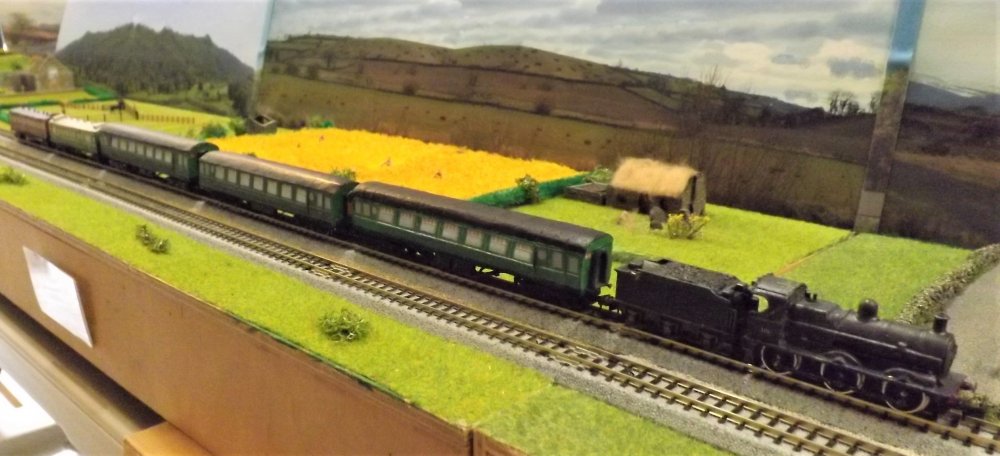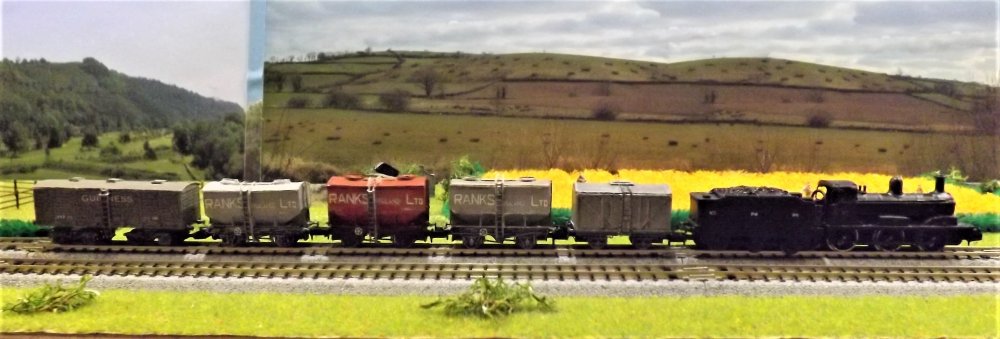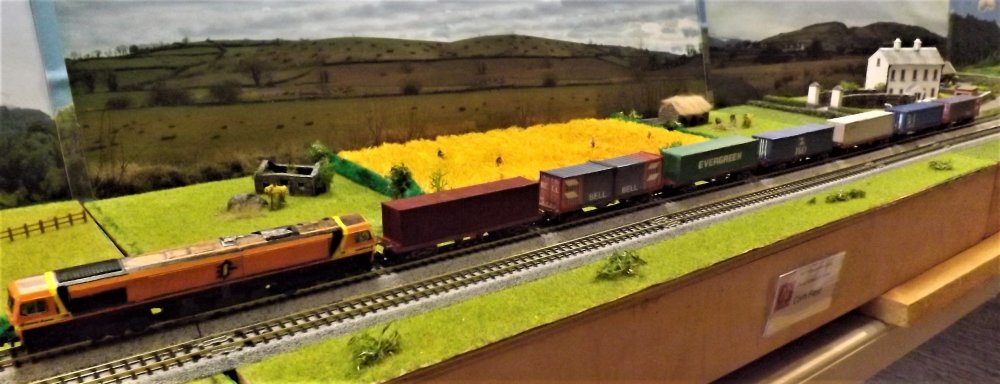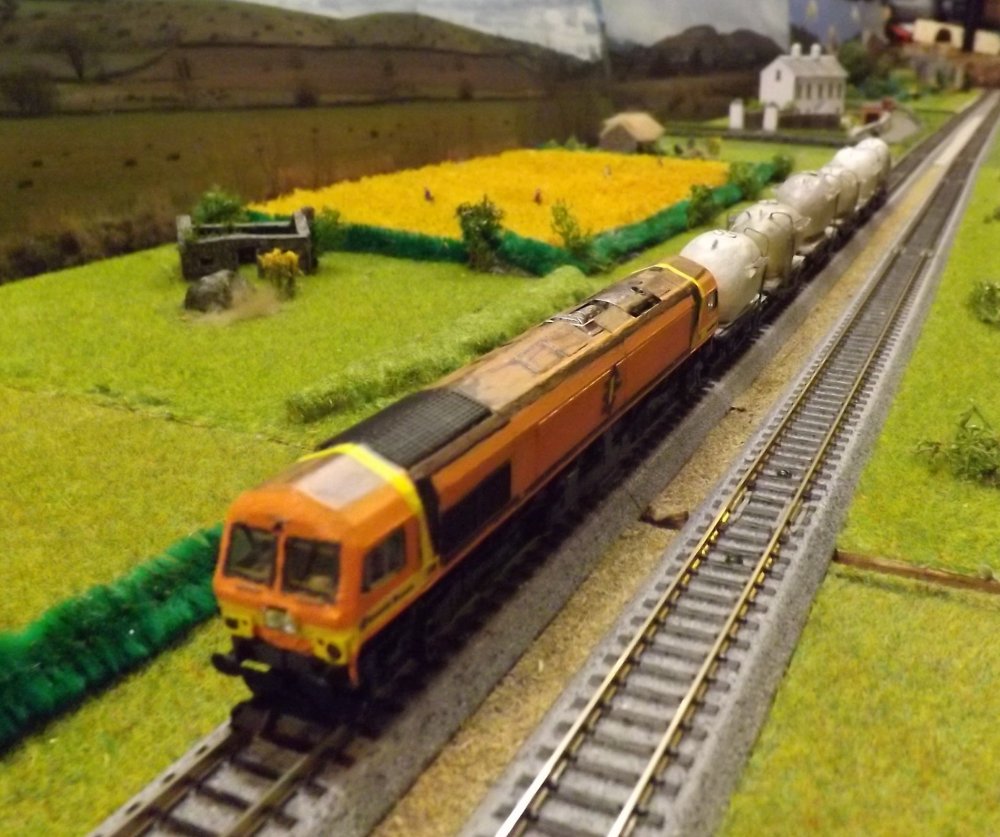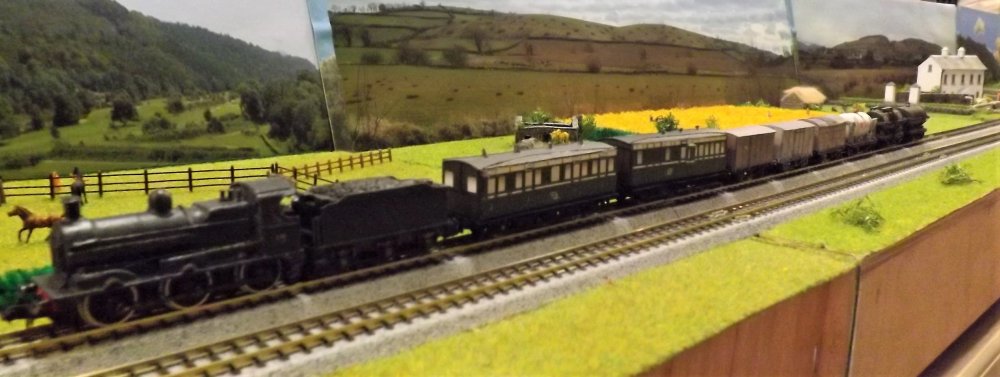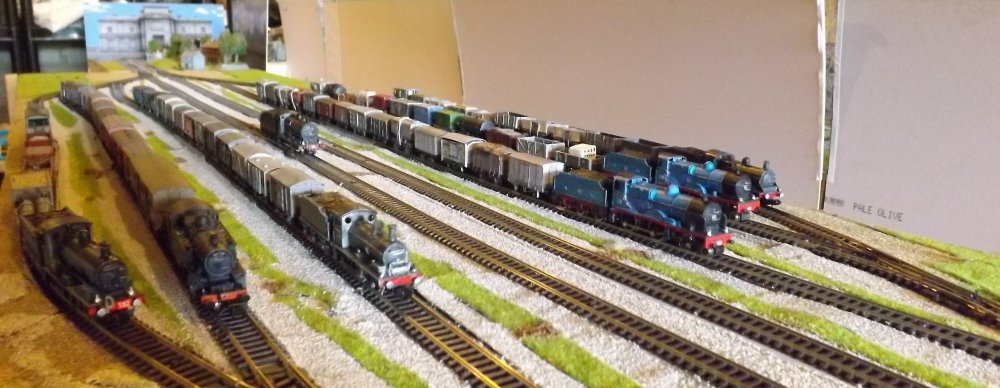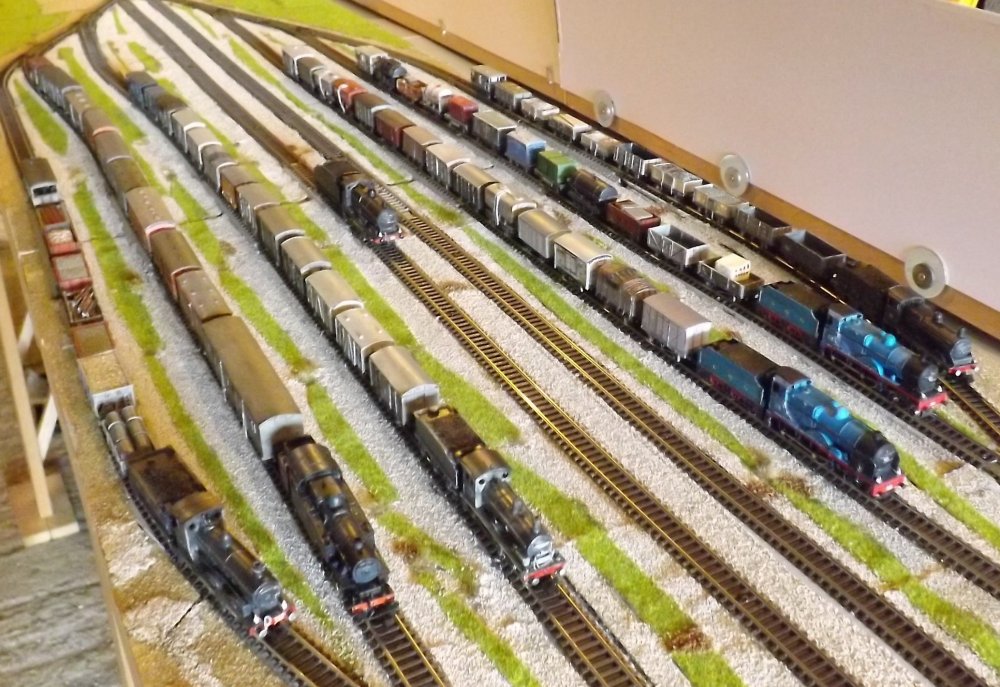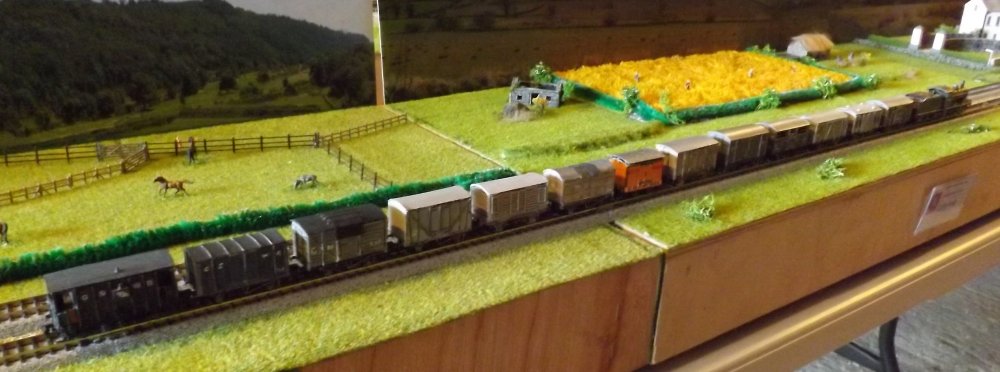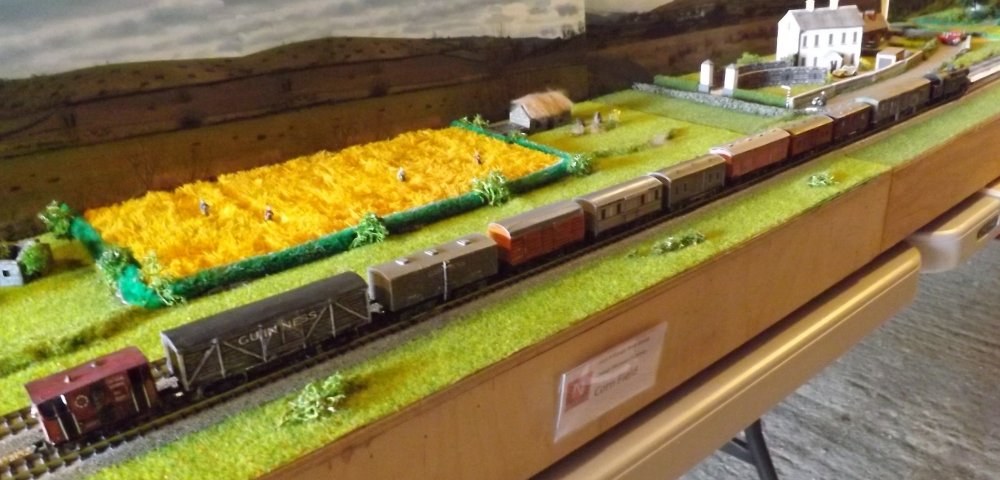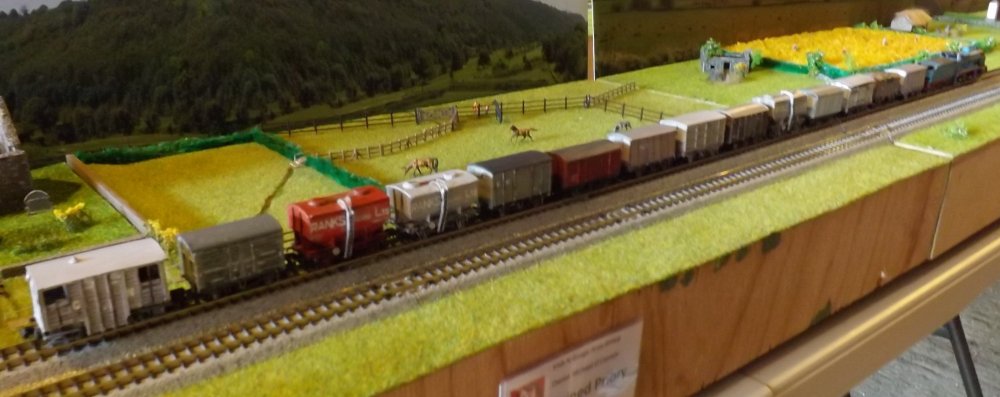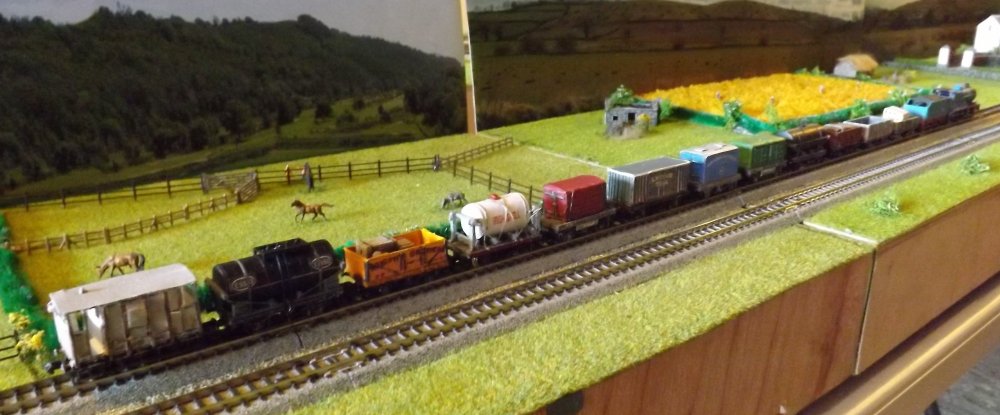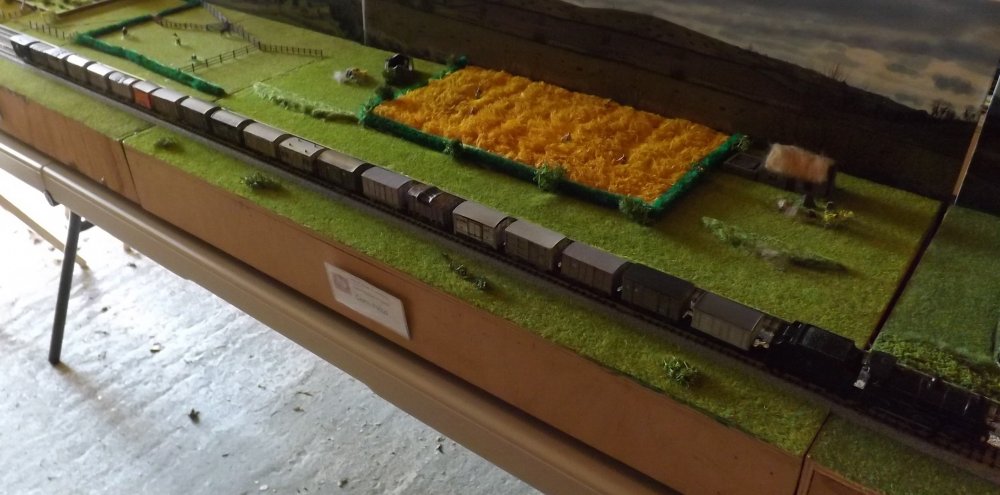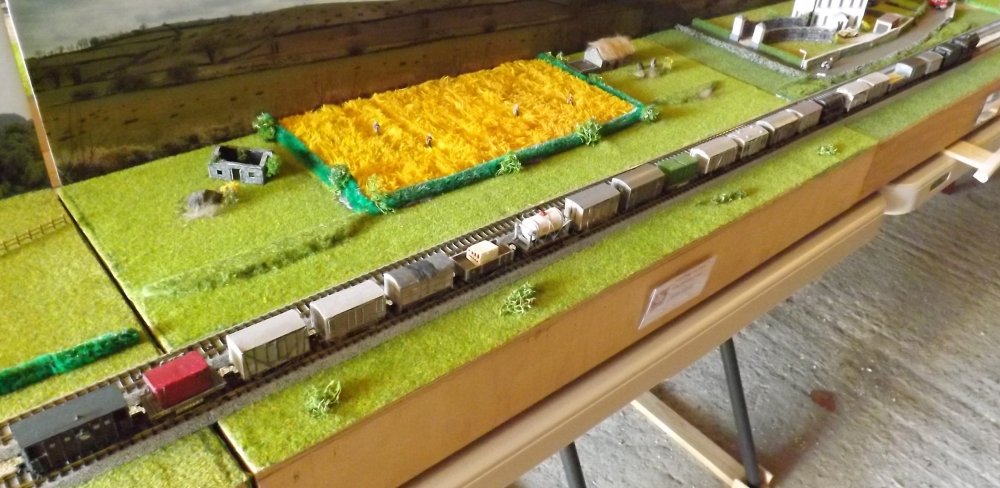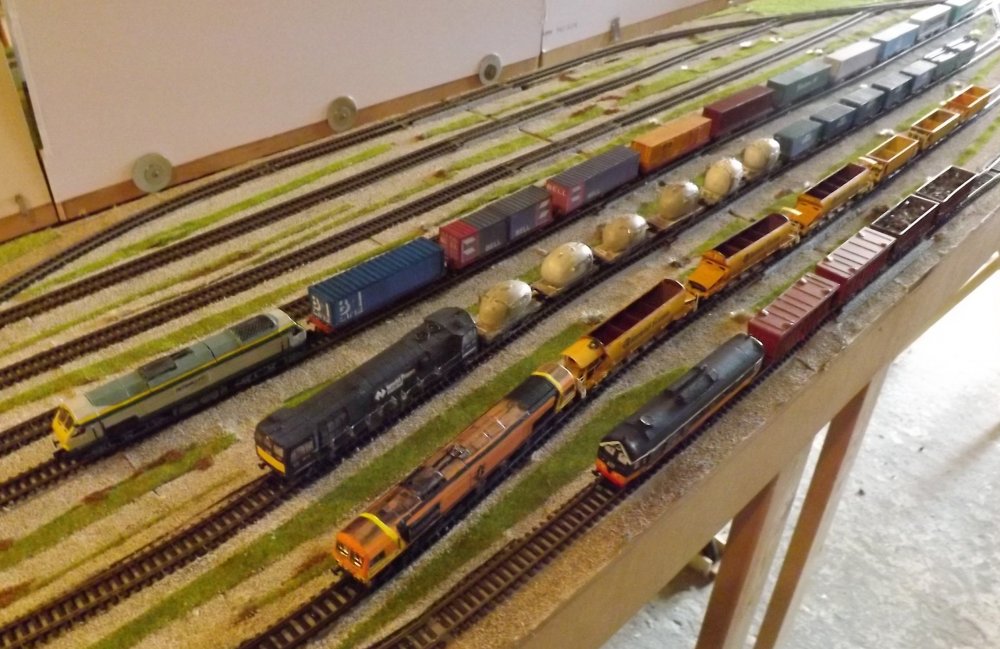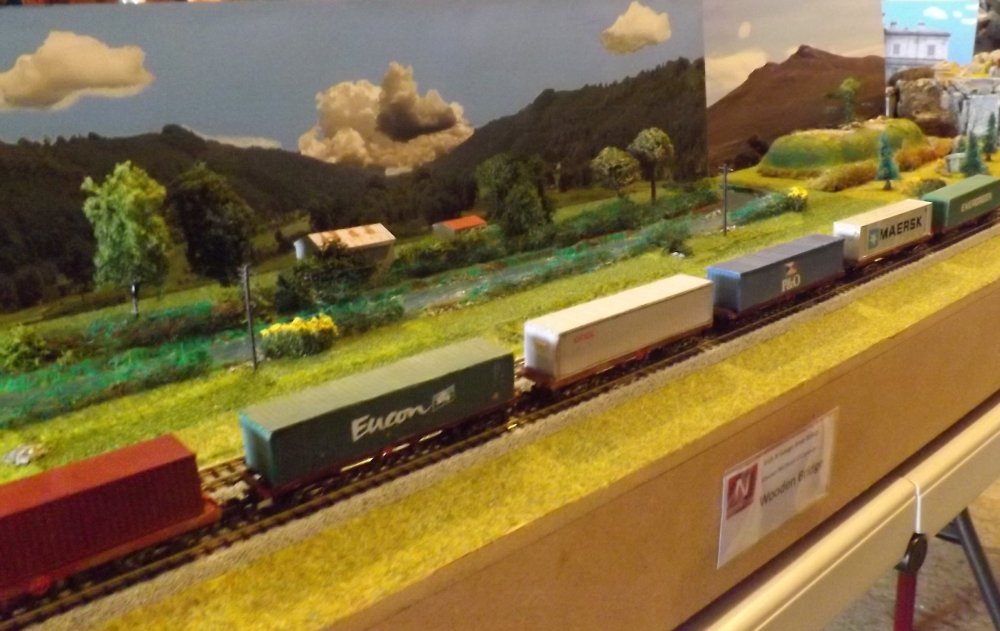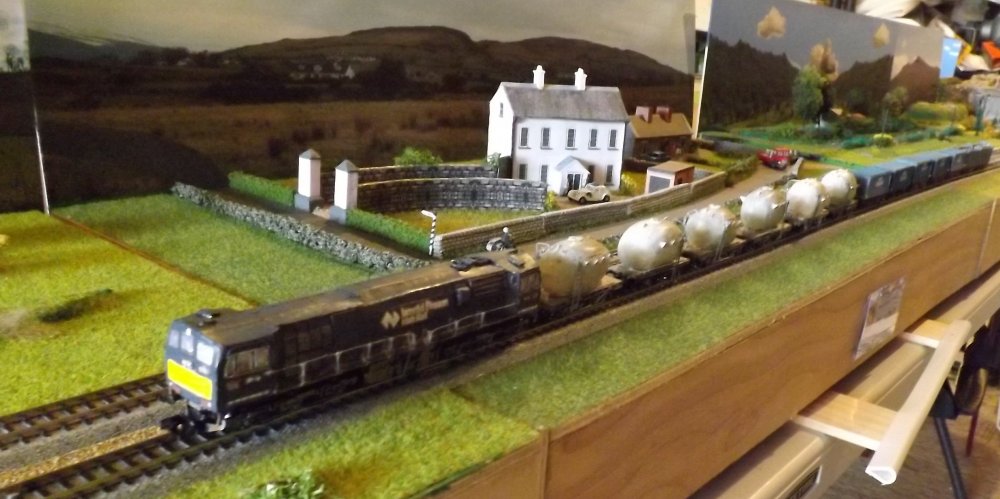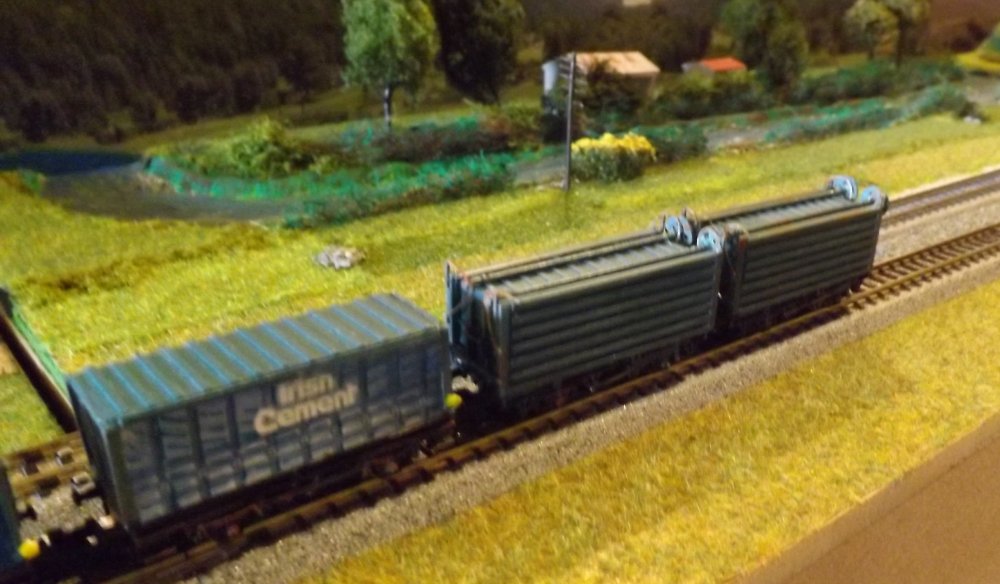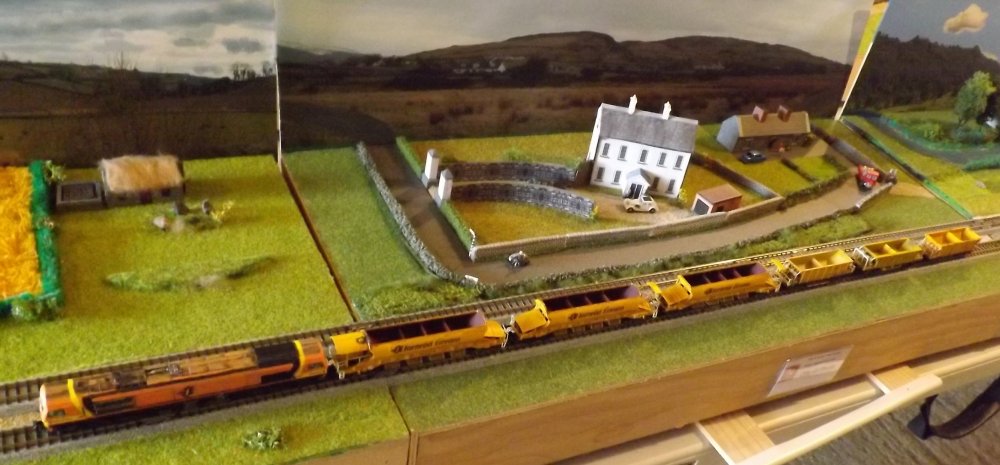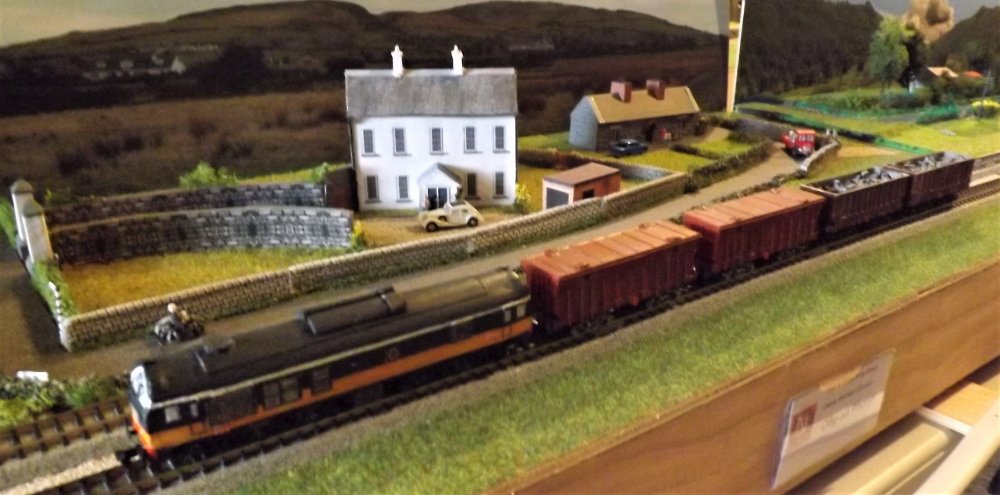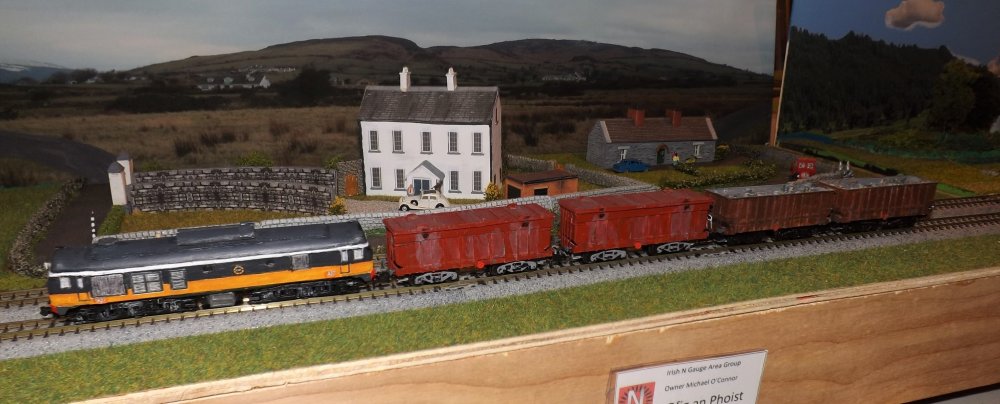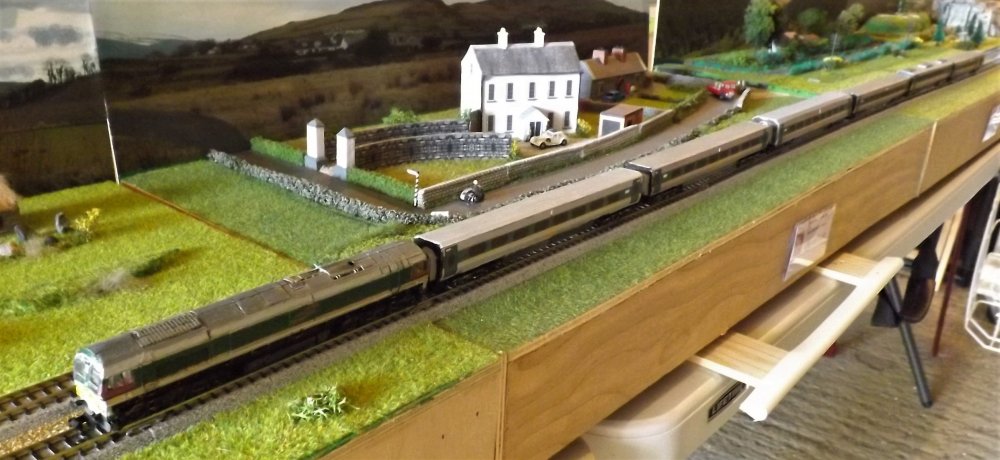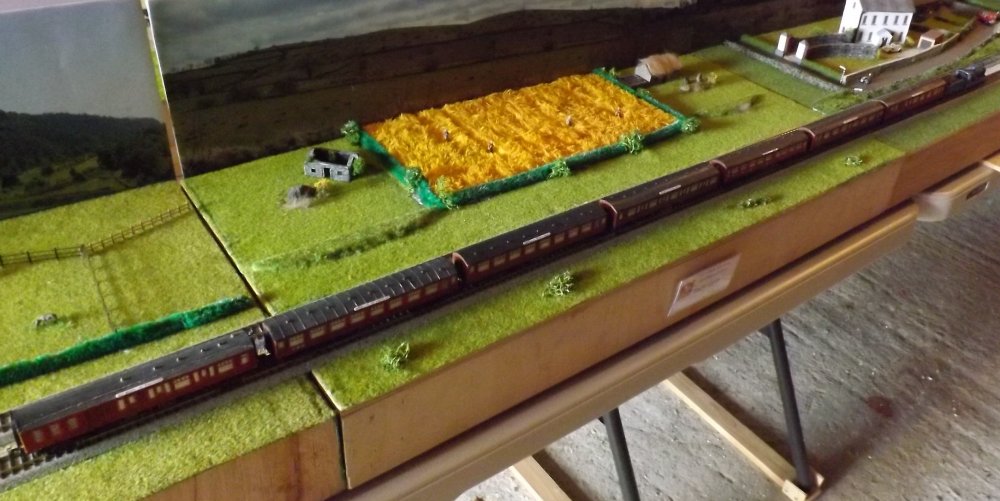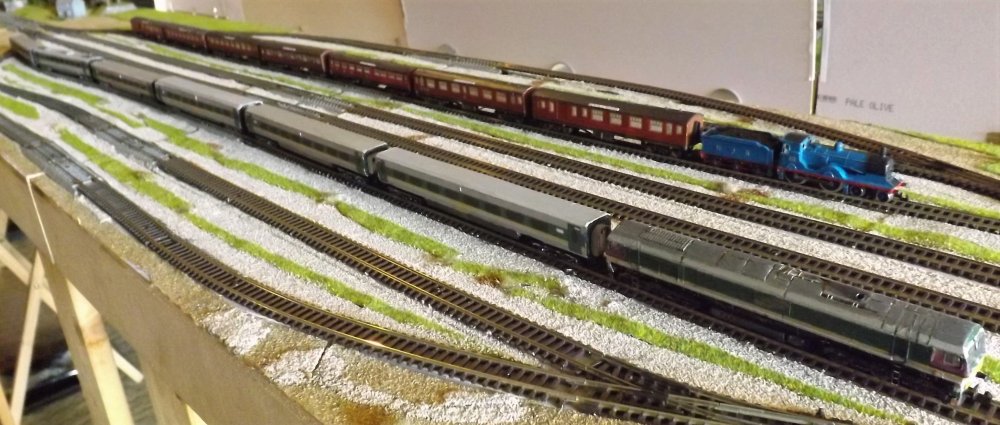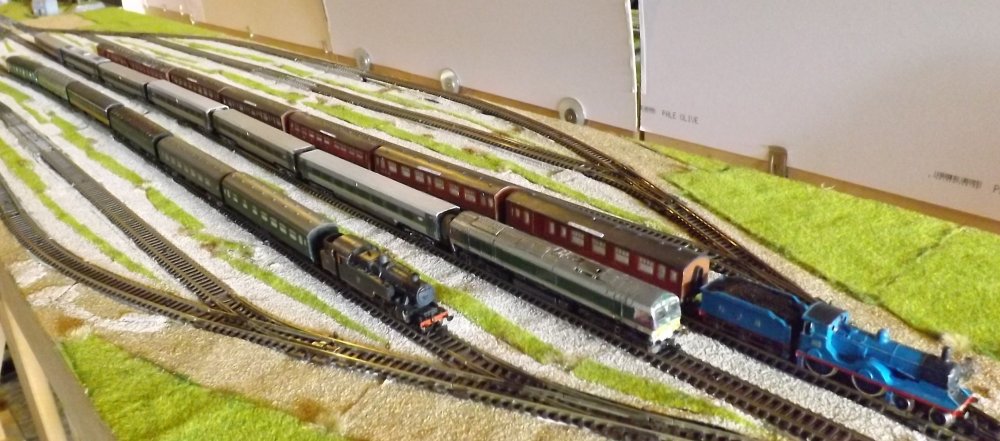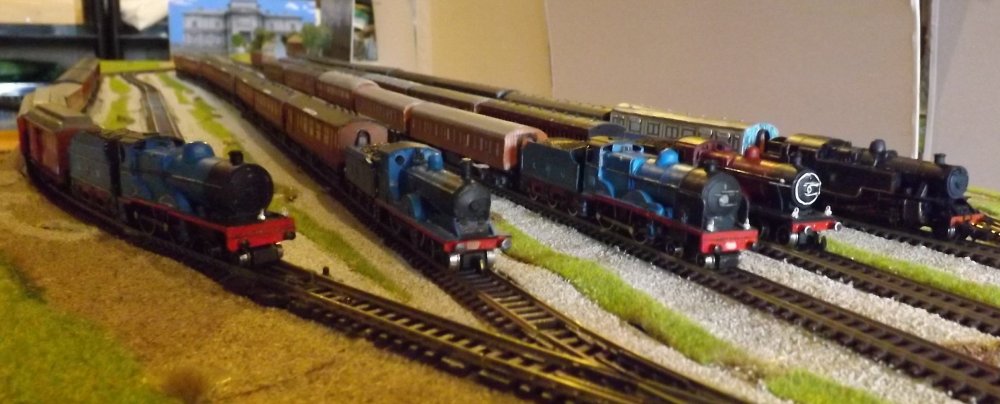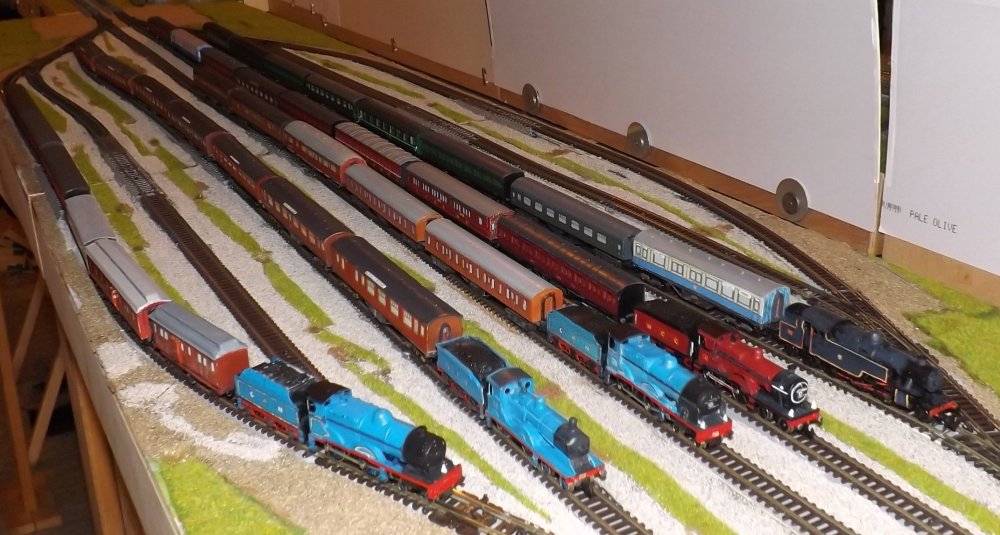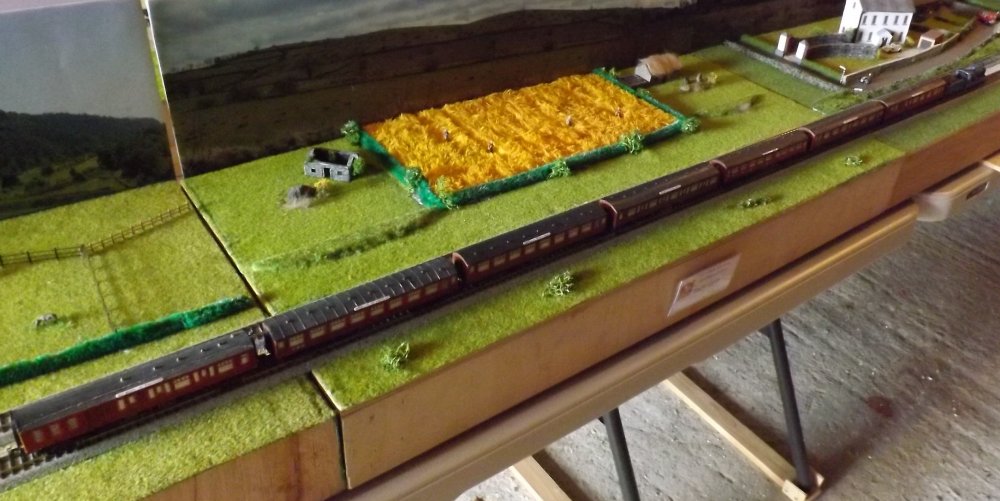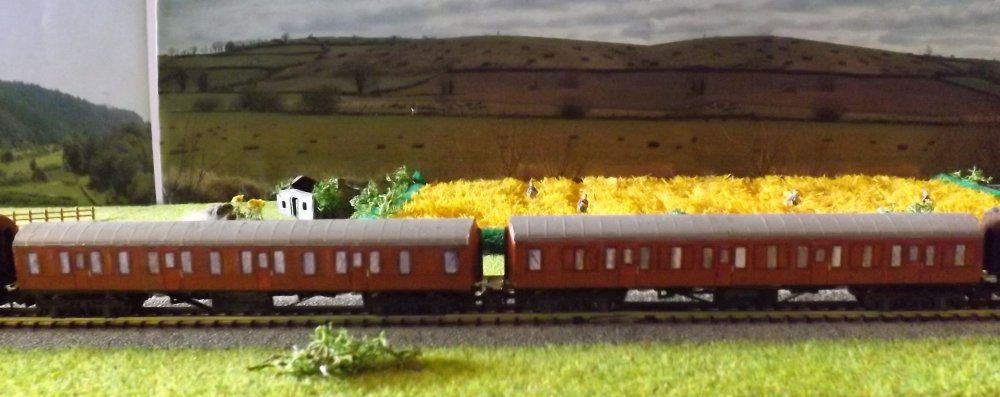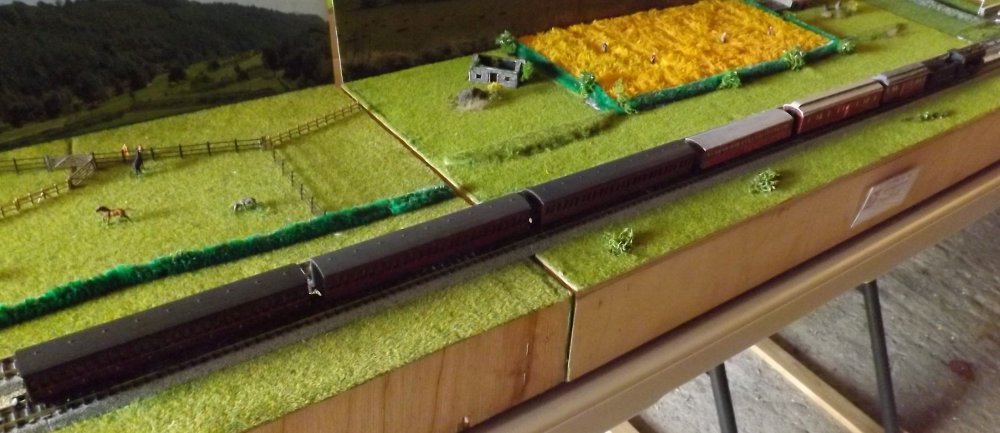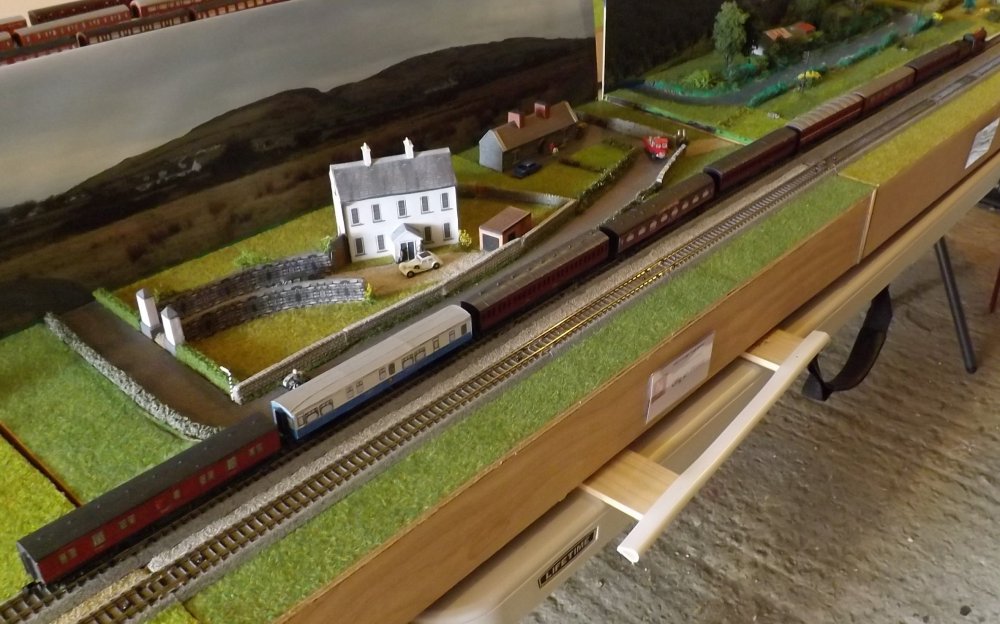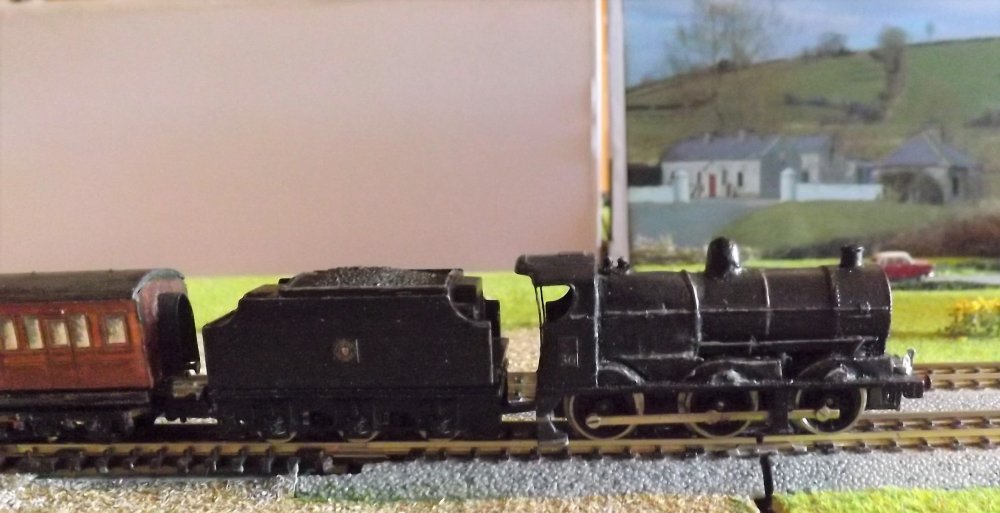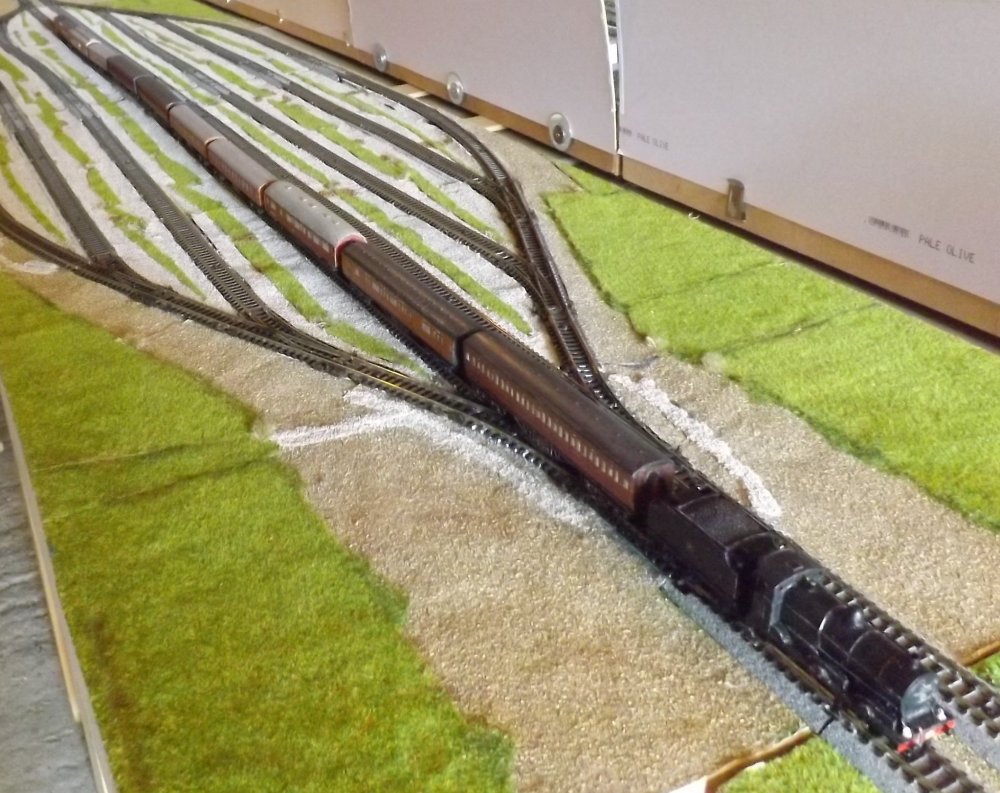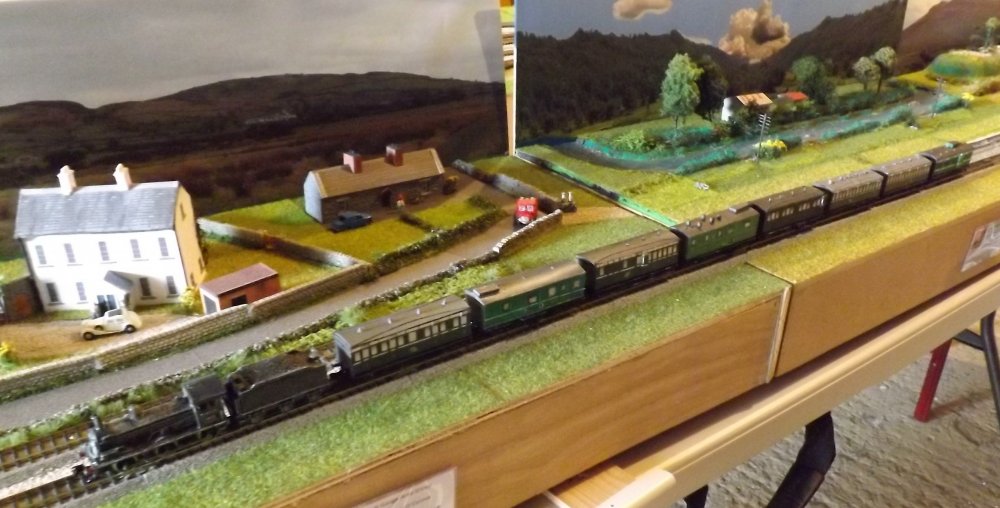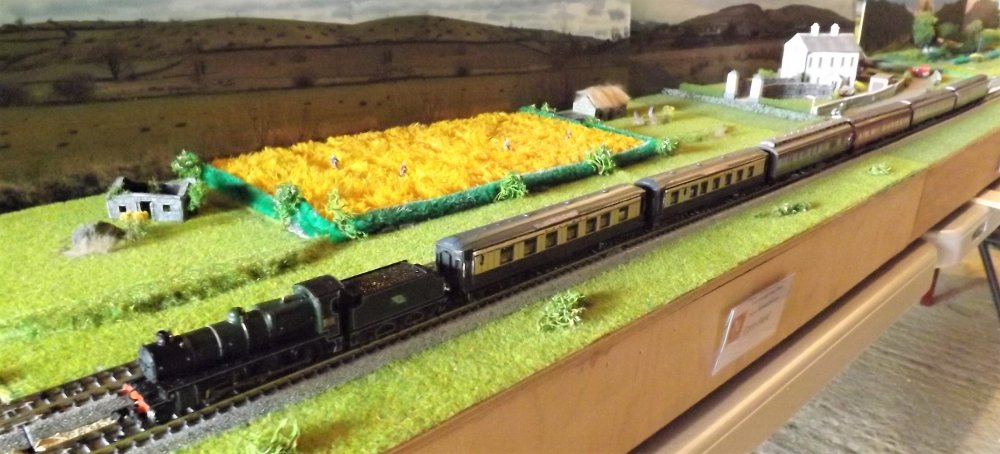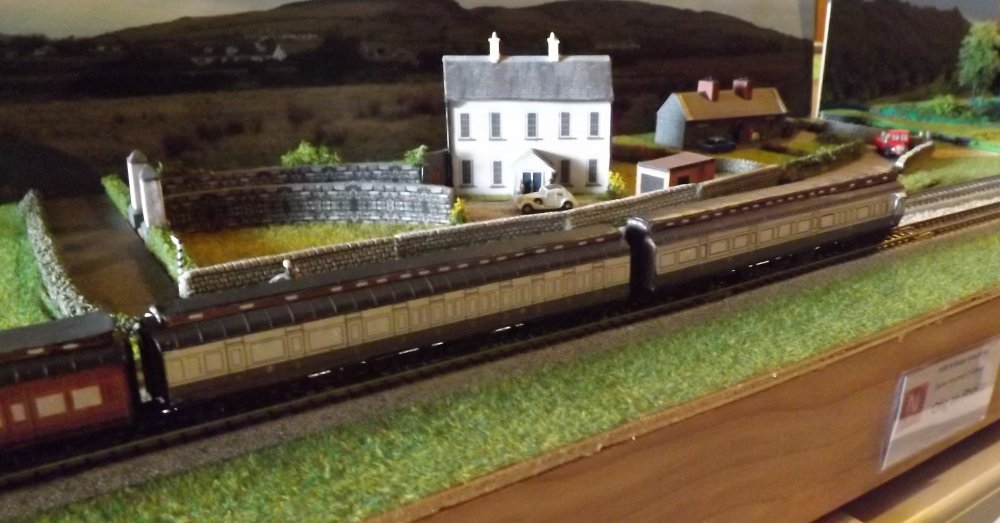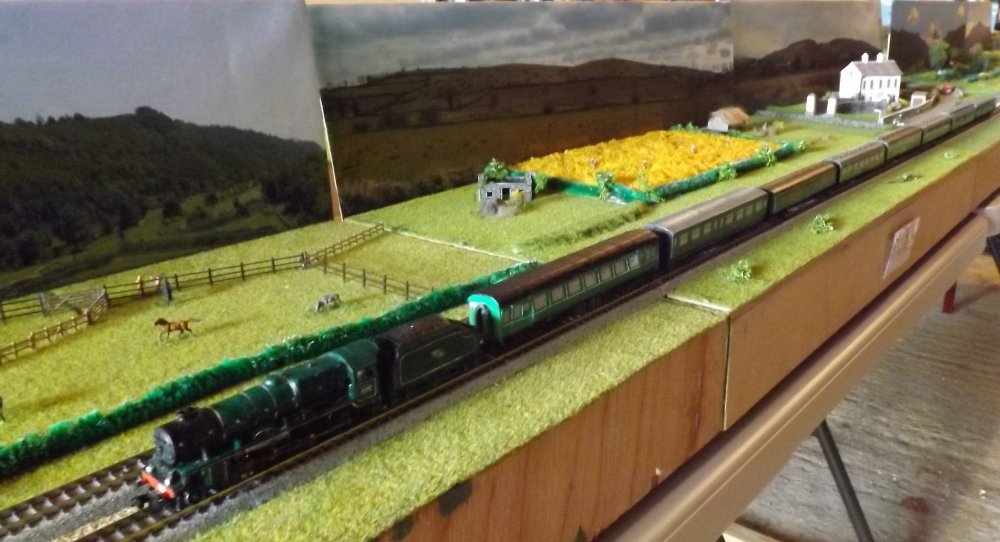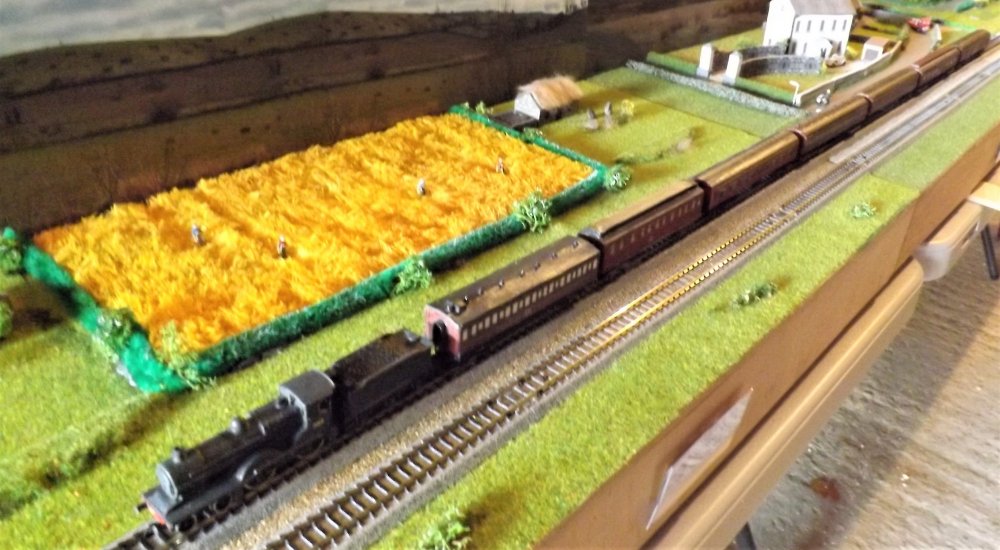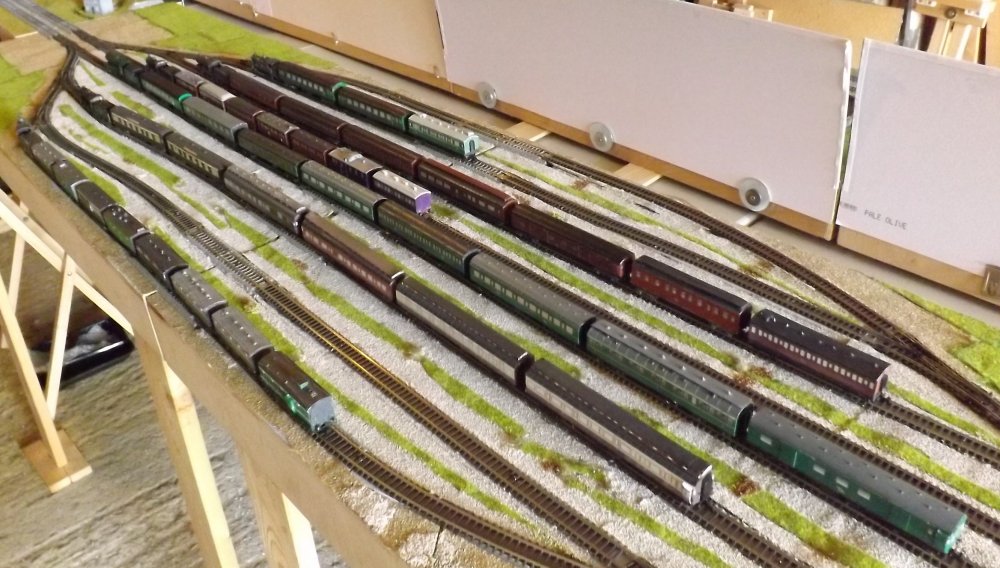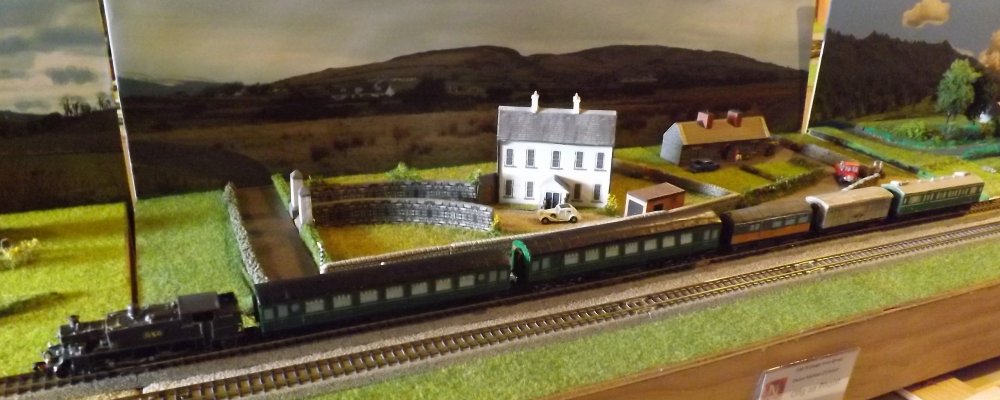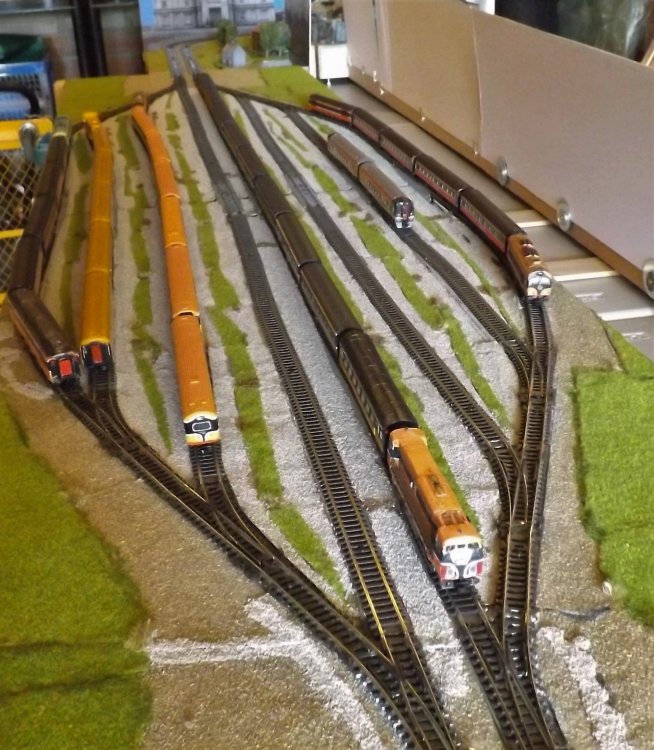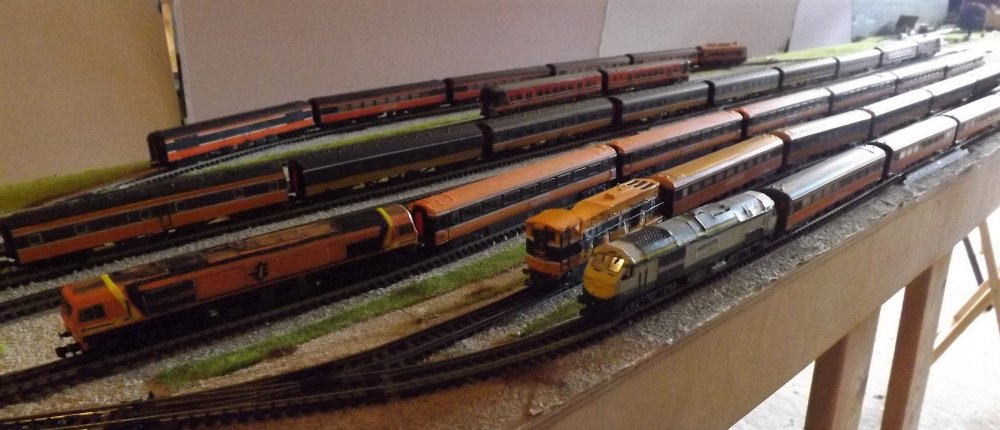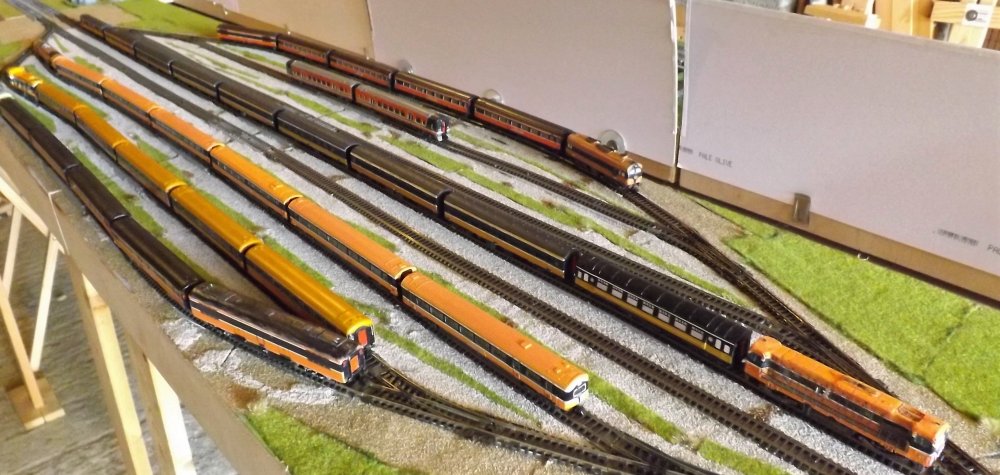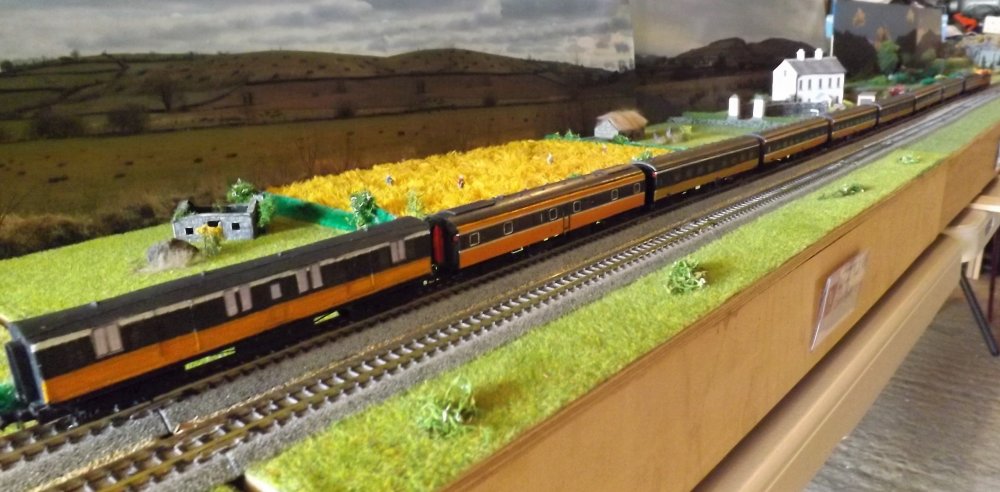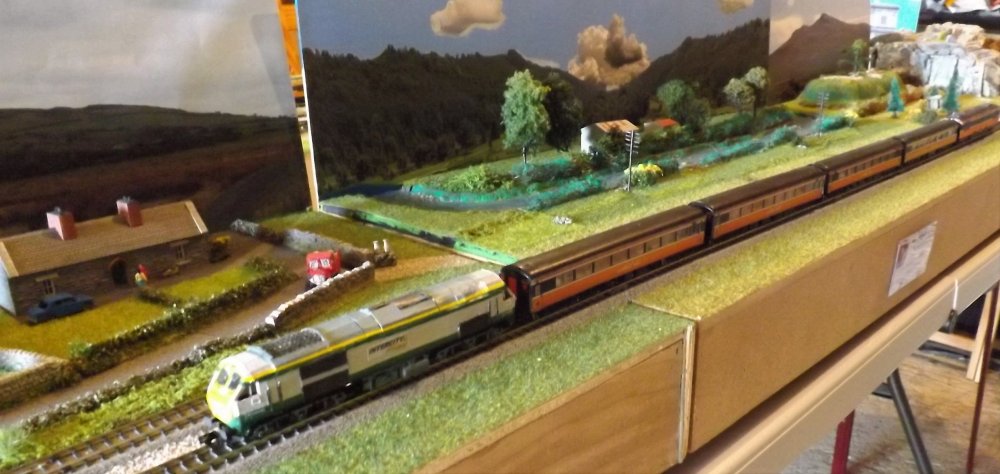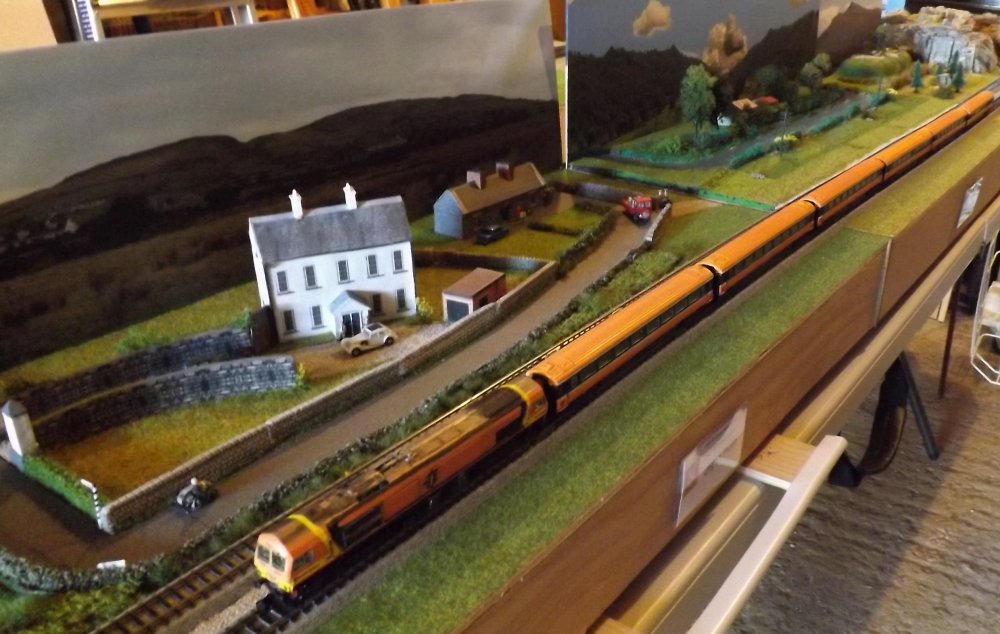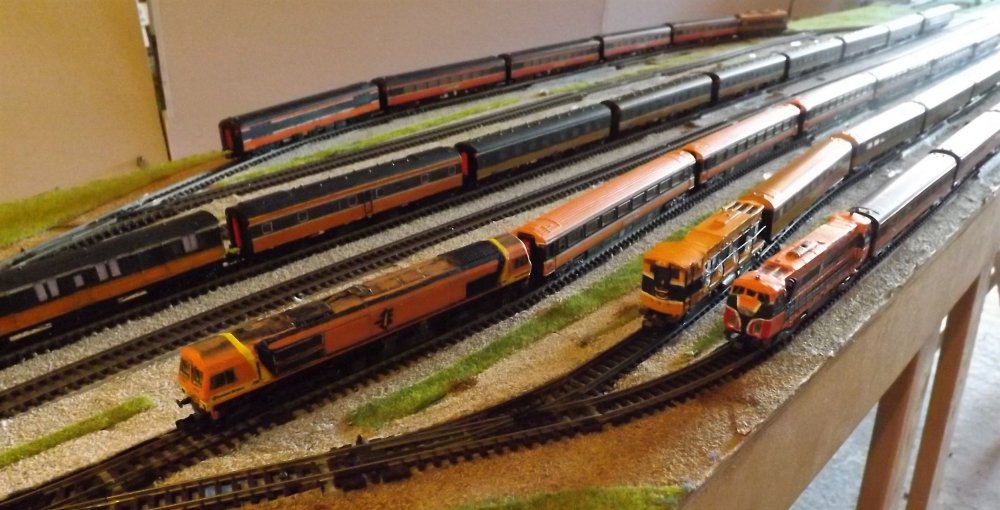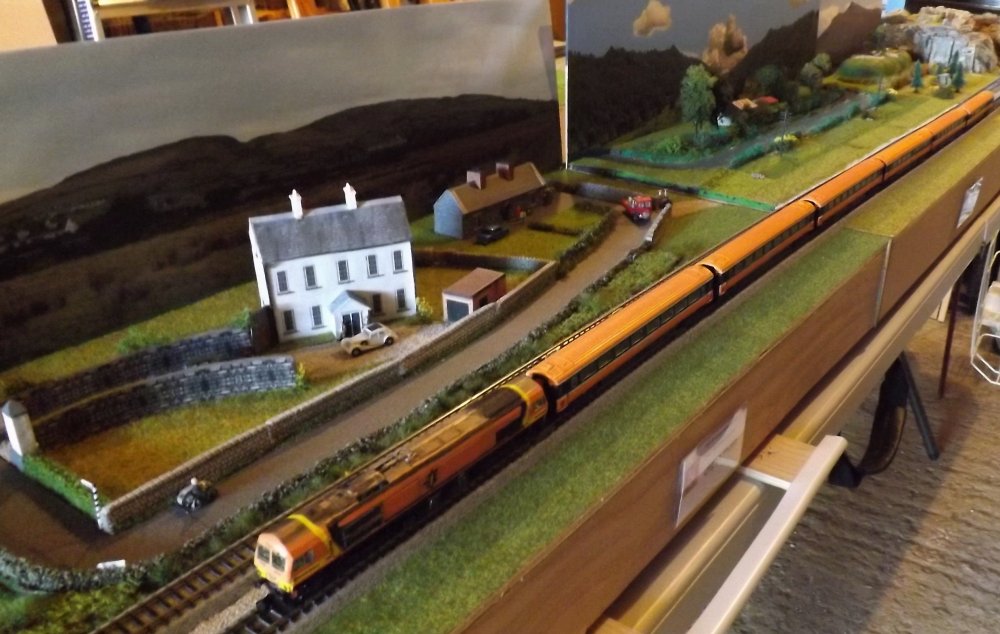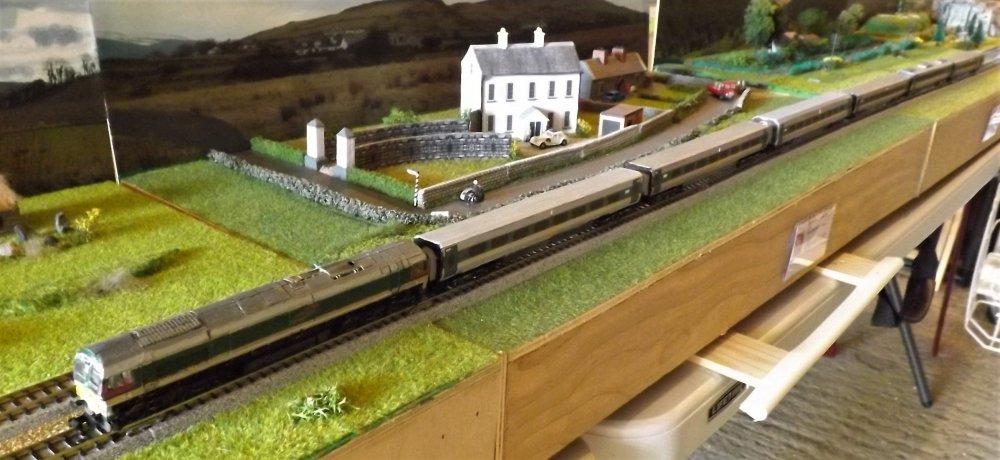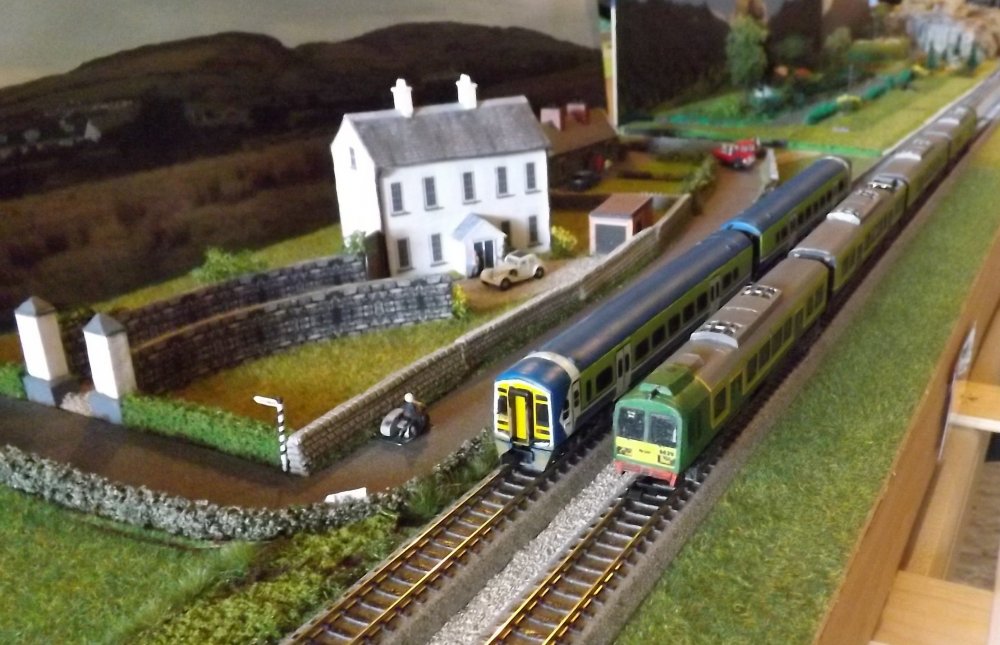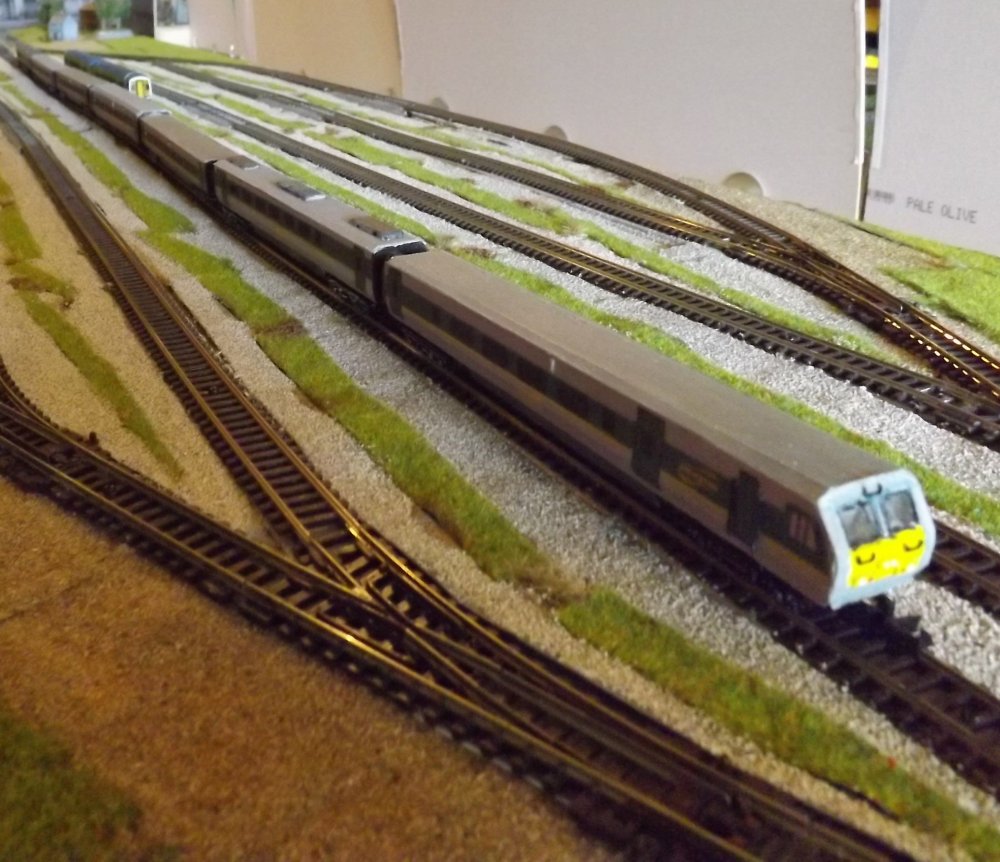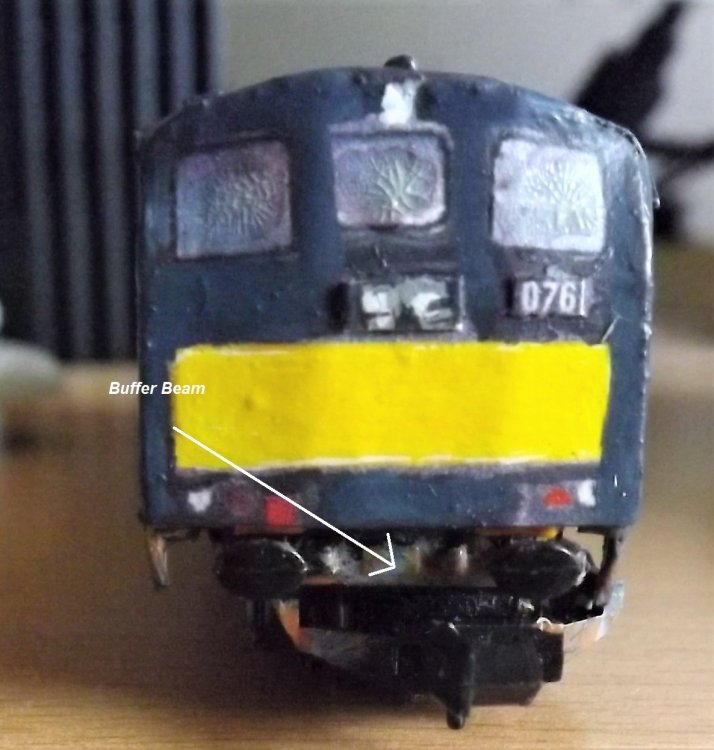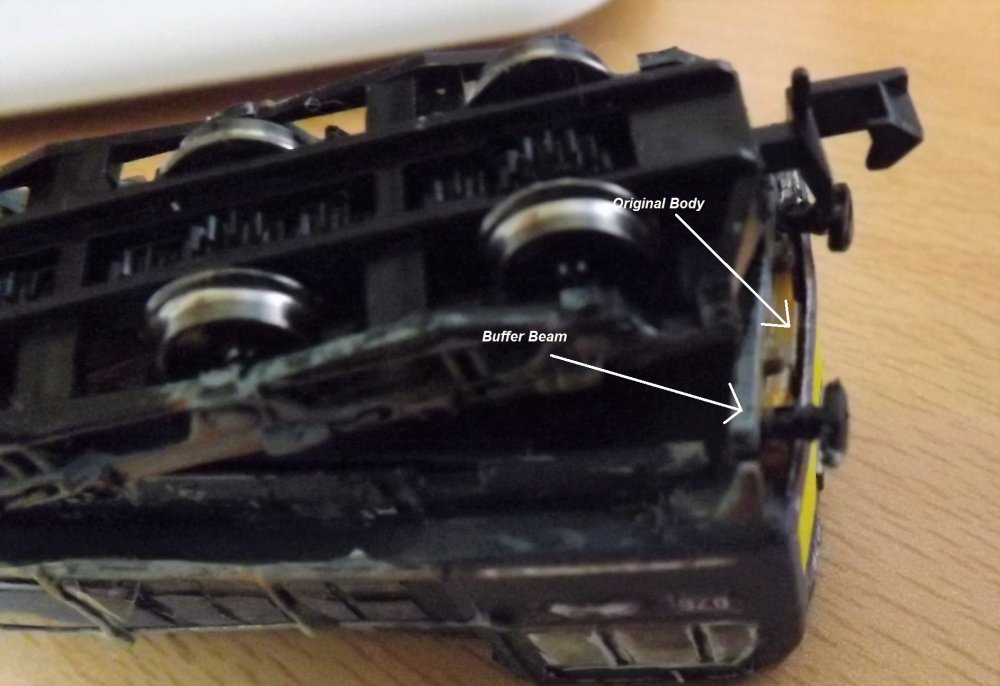
MikeO
Members-
Posts
261 -
Joined
-
Last visited
-
Days Won
1
Content Type
Profiles
Forums
Events
Gallery
Blogs
Store
Community Map
Everything posted by MikeO
-
Looking well. The main thing is patience, something I struggle with each time I start a new model. Also as has been said in other threads keep checking the next step against your drawings or photos. I have lost count of the times I have proceeded on the basis of memory just to find out it is wrong. MikeO
-
David A brilliant piece or workmanship. The end result really makes up for all the trials and tribulations involved in the construction process. MikeO
-
No personal experience. A friend bought a number of diesel bodies with the idea of putting them on an SW9 chassis. I saw the bodies. First impressions were that they need a lot of work to make them look smooth as indicated in various threads in this forum. The main issue was the amount of space inside the locos it was very narrow and did not look like an SW9 Chassis would fit with out widening the inner walls of the body. Un fortunately he has not gotten around to doing anything with them. MikeO
-
An N gauge layout in whatever size you want to make is very feasible. You have made a good start with this one. The skills you have learned in converting the oo gauge stock will still apply to your N gauge conversions. The 2 main strengths of N gauge are that you can get more into less space and smaller details on the stock are not required( in some cases are very difficult or not feasible to do). The main consideration given the small size of the stock in my opinion is the look. Sometimes that can be tricky enough to achieve. I have been converting/scratch building Irish N Gauge stock for the last 8 years and run the trains on varying sizes of layouts made up of T-Trak modular boards. This is the link to my T Trak thread. Any questions just ask. MikeO
-
Thanks for you comment Andy. I normally do not have an issue with roof as most coaches would end up dirty black or grey. For the state carriage I had thought that because it did not get used often and was a prestigious vehicle it might be more "colour co-ordinated" to emphasise the important role it played in the fleet. It will likely turn out to be a mid to darkish grey for the roof and a fairly dark grey for the chassis. MikeO
-
Thanks JHB very useful information as usual. I do not have the Ernie Shepard book but do have Desmond Coakham's book which has two photos of the MGWR state carriage (per Mr Coakham in its CIE Green livery). While the photos are in black and white, the whole coach looks to be the same shade which led me to think that the roof and chassis were also green. Just proves how deceptive photos can be. Given the curvature of the roof of the MGWR state carriage I thought it would also be dark maroon, the roof lends itself to have the livery wrap over it. MikeO
-
I am looking for some help with roof and chassis colours for MGWR coaches. When the MGWR changed its coach livery to dark maroon were the roof and chassis painted the livery colour? If so would the roof have become darker due to weathering and smoke for the loco perhaps maybe appearing black or very dark grey? In a 2015 thread about a potential layout based on Mulrany it was mentioned that some coach roofs may have been white initially but did not stay that colour very long. In regard to the state coach would its roof and chassis follow the same colouring rules as the other coaches? MikeO
-
You may already have looked but incase you have not search for "old Greenore" you should in the images section of Google find links to the National Inventory of Architectural Heritage which has some views of the hotel as well as a description which may help deduce what was add to the original building. Look also in the Historical Pictures Archive there are a few alternative views. I think there is a Railway/Maritime museum in Greenore that may be able to help. MikeO
-
It seems to be a 15 Ton version. I have an IRRS drawing of such. Could be 1910 vintage and about 19ft over headstocks(22ft over buffer). The 10 ton version had only 1 drovers compartment but the same dimensions. the picture in the above post does not show any roof vents/light holders so may have been converted to just a guard or parcel van. Mikeo
-
I hope to make an N gauge model of this carriage from plastic with glazed windows. While I have information on the exterior and the general layout of the interior of the carriage, I have nothing on the interior walls. Does anyone know if the walls were panelled in similar fashion to the GNR(I) Directors coach. If they were what type of wood was used and was it just varnished? When the carriage was re-liveried into CIE Green did the interior remain the same? Would the various tables and chairs be the colouring same as walls? MikeO
-
The IRRS booklet Great Northern Railway (I) Carriage Diagrams : Part 5 Non passenger Stock in section 3:8 shows a P2 bogie van. There are 10 listed Nos 783 to 788 were built in 1934 and Nos 755, 757, 777 and 778 were built in 1944. the side elevation drawing shows them to be made of horizontal wooden planking with the sliding doors in vertical planking. they differ from the P1 versions in two main ways: first there are strengtheners 7 on each side, these could be made of metal and are possibly the metal frames referred to by Desmond Coackham. The second difference is that the windows and associated louvres are smaller and have been re-positioned. The letter "G" is on one sliding door and the letter "N" on the other. Unerr the tile of these vans there is a bracketed note to say they can run with passenger or goods trains. there is no similar note for the P1 versions The P1 vans are numbered 779, 780 and 781 no build date given. Hope this helps MikeO When I did a search just now for P2 vans I came across an image of a P2 van which linked to the louthnewryarchive.ie site but no image of the van within the site.
-
Some what later than planned I have included some photos of combinations of locos and stock that I would not have thought to combine. As often happens when there are delays something similar turns up in this form in various threads. This photo show 3 Park Royals in one short train. This is based on a photo by David Murray This is one is inspired by one of the photos that turned up in the forum in John Mayners thread on GNR grain and open wagons. The Ranks and the Guinness grain wagons have been seen before but I adapted one of the covered wagons to be grain wagon as per the photo in his thread. The next 2 photos show a 201 at the head of a container liner and some bubbles. Another 201 in Enterprise livery with some bubbles Lastly a truly mixed train I took a lot more photos for inclusion but on reviewing them I thought they were not good quality or focused too much on the loco with the rest of the train out of focus.
-
I had not seen this before when I looked the Continental section previously. The best layout is the Hochschwartswald. The loft in which it is located is just as stunning. MikeO
-
More freight this time from the steam era although many of the wagons were still in use in the early diesel era. The photos are from the steam era. The first 3 photos show an overview of all the freight stock. Photo 3 came about by accident as I was making up a long goods train leaving gaps where I had taken some stock out of the other trains. I thought it lookked like a marshalling yard. This gives a clearer view of the stock A very varied covered van consist These are a mixture of long 4 wheel, 6 wheel and bogie vans. While some of the brown vans would be part of a UTA or NCC passenger working I am never sure how the rest were marshalled. This is my permanent way train, mostly a mix of ballast wagons and a plough van A second set of covered vans with some Ranks grain wagons. A mix of what could be termed containers with some tankers A closer view of the long covered van train shown in the middle of the third photo above. There are 20 wagons pulled by an SG 3 A second long but more typical mixed goods train Lastly a mix of open wagons That completes my stock at present. Looking through the various books that I have a number of loco and stock combinations struck me as interesting, so I will set some up on the layout and take some photos. MikeO
-
Moving on to some modern freight. Some you will have seen before in this thread but others are new. In this overview the first 4 containers have been seen before as have the yellow autoblasters and the NIR ballast wagons as well as all but 2 of the cement wagons. However they are here for completeness. The remaining containers are all new. Two are plastic and the others card. All the containers have scratch built wagon flats. The plastic ones are the red/brown which is a C-Rail product and the Maersk is a 1/160 scale Fleischmann one. Two closer views of the cement train. all of the cement wagons are scratch built. The new items are the last 2 wagons. I have painted them blue as that is the colour I have seen them portrayed in on this forum.But there are photographs of them and some curtain sided wagons in brown in Colm O'Callaghan's book Irish Traction Iarnród Éireann. A closeup of the ballast train. Finally 2 views of my Tara Mines and shale wagons from plastic sheet and styrene strip. These are all scratch built including the chassis. MikeO
-
A few photos of the old and the newish Enterprise trains. In the previous post i said I would do 1 photo but like most things as I started to take the photos the possibilities grew so more photos were required. First the old and newish. The old is circa 1948 and the newish circa 2000 although I am open to correction on the later date. While the 201 class and the De Detrich's were firmly in the era of corporate identity. To a certain extent the early train also has a corporate identity, mahogany coaches and blue locos with the usual name boards. The S class and train on its own. At the start of the Enterprise service in 1947 the Vs class would have been the main motive power. The 201 class and coaches on its own Come the 1960's and any semblance of a corporate image has gone. The left most train is a real mixture of company liveries. Three UTA coaches just behind the loco( a WT class no 56 with UTA logo), Two CIE coaches 1 in B&T and the other in Green and at the end another UTA coach. All heading to Dublin in May 1964 as per Derek Huntriss book Irish Traction in Colour.
-
Paddy Well done and very impressive. Perseverance pays off in the long run. Although you say it is simple to me it is still complex but anything to do with electricity baffles me. MikeO
-
Continuing with the age of steam the next series of photos cover the GNR, NCC and UTA periods. The overview shots show the stock with different loco types at their head. In this view there are 3 GNR rakes, headed up, from left to right, by PPs class no 43, QNG class no 112 and S class no 70. These are followed by a UTA rake headed by WT class no 56 and the NCC rake with U2 class 74 Here the 3 GNR trains are headed up, from left to right, by V class no 85, S Class no 170 and Vs class no 208 This is the same shot but with the use of flash the blue colour of the 3 loco is more clearly seen. Same shot agin but with flash the colouring of the 3 coaches behind the loco can be more clearly seen as an orange/brown. This is similar to models on display at Whitehead. Here we have the Enterprise circa 1948 with the S Class in charge. The coaches are D5(brake first), C2(first), K20(Buffet), K15, K24, F17 and L14. Apart from the K24 and the F17, the others are quoted by Desmond Coakham as making up an Enterprise set in 1948 although there should have been 3 K15s in total. A short GNR train consisting of PPs 43 and coaches K8, K23, K23, K23 B1(diner) and J2 This close up of the 2 K23 coaches is included to show the different window arrangements. All but one had the arrangement on the left most coach but no 135 had the arrangement on the right most coach. You can just see the shutters to either side of 5 of the windows. This is the 3rd GNR train with QNG class no 112 in charge. The coaches are W1(6 wheeler), M1 van, I10, 2 F15s and I11. The last 3 liveries are very dark as that is their original livery. I left them as is because some photos clearly show dark liveries. I accept that this may not be totally accurate. The UTA rake is headed by WT class 56 and consists of an A3 (in Blue and cream), J17, F15, J16, F7, F2, J11 and K6 in varying shades of dark green Lastly the NCC set comprising U2 class 74 and coaches J11, I2, I20, H2, North Atlantic Express Buffet Car no 90, J11, A3 (Blue and Cream) and V16 This is the last of the passenger stock except for one photo that I have to set up of the old and the modern Enterprise sets.. Next will come the freight. MikeO
-
John You made the following comments "The Lima Irish N Gauge steam loco and passenger coaches were British outline models in CIE livery introduced in the late 70s early 80s. The Lima coaches and wagons were reasonable models by the standards of the time, but I would not recommend the locos if you want a working model. The motor, traction tyre and power pick up system was pretty poor and would cease to run reliably or haul anything after a couple of weeks use. I replaced the tender drive in a Lima o-6-0 with the chassis from a Fleischmann 0-6-0 diesel shunter which transformed the running and haulage ability." With regard to the hauling power, my experience is slightly different if I have the same type of loco being described. See photos 1 to 3 below. I have one on loan from a friend with the intention of making it vaguely Irish. I thought it resembled an SG3 so made a few changes to the original. It has always been a reasonably good, if noisy, runner. In terms of hauling power, today I had it run around my temporary layout in my garage which is 3.6m (12ft) long. It pull 10 coaches with only a little slippage staring mainly because it had not reached its optimum power setting for starting off. This is usually about speed step 6( even light engined) on my controller. I ran it around the layout several times, each loop being about 7.2m(24ft), firstly with 7 coaches then with the 10 in photo 4. The running time in total was probably only about 5 minutes. Can't show the video I took as I do not have a YouTube account. While it is fine for short runs such as this longer runs of about 20 minutes noon stop would likely be too much for it. At several exhibitions I have had it come to a sudden stop. Next day it is back to normal. MikeO 1 side view 2 and 3 shows the maker's name 4 Loco and 10 coaches
-
Moving a little further back in time to the GSR/CIE steam period the next set of photos show a variety of passenger stock.. For the GSR the liveries including the Purple Lake, Maroon and the Cream/Brown. The CIE period covers mostly the lighter green era as well as a "tin" van and a B&T TPO omitted from the first set of photos. Again starting with a few overviews The first overview shows the CIE Green coaches The GSR stock has been added plus a couple of other CIE Coaches J8 no 443 heads a rake of mostly ex MGWR 6 wheel coaches in CIE Livery. No 443 was the only member of its class to have double side cab windows Next we have K1a no 323 with a variety of coaches making up the boat train A close up of the two Brown and Cream coaches Class 800 leads a long train made up of the following coaches: a park royal, 2114, 1349,1143,1306,1290, Celestory 12D and Brakevan 2540 Class D17 no 18 is in charge of coaches; 345, 561, a Bredin, 897, 220D, 353(only 4 wheels per bogie not 6) and brake van 2540 this time in GSR Maroon J15 no 106 pulls a mix of 4 and 6 wheel coaches of various vintages: nos 900(1924 version), 47 Dargan (in MGWR Brown), 949, 900(1953 version)308, 15A (Bird cage brake) and 7b. The last two in Purple Lake. P1 class no 850 has in tow 2 park royals(One with the port hole window and one without), a 4 wheel TPO, a 4 wheel tin heating van and no 471 P1 class 850 is now in charge of the boat train. MikeO
-
With all the Exhibitions since March cancelled, I temporarily set up a T-Trak layout in my garage. I am taking the opportunity to give all my Irish collection a run and in many cases to combine stock that would perhaps not be seen on the layout at the same time. The following photos show mostly orange and B and T liveried stock with a few more modern items at the end. The rest of the collection will appear over the coming weeks. Much of the stock will have been seen at various times in this thread but some will be new. The first 2 photos as usual show an overview. The"Tippex" coaches, pulled by the class 181, are shown for the first time in a single consist Here is a view of the luggage van and the EGV at the end the long consist The Grey intercity loco has been replaced by the class 181 This is the first of the new stock. The Enterprise liveried loco has been seen before but the coaches are all new. For along time I had been looking to acquire stock to run with it. However it was just this year that I found the inspiration to be able to do so. All of the coaches are made from a mix of plastic and card. The only commercial items are the wheels and bogies. This is the DVT at the rear of the train MikeO
-
A good start. The main thing is that you are happy with them. None of my Irish stock is totally authentic but I am happy with them. MikeO
-
Peter The buffer beams are attached to each end of the chassis and the buffers are attached to the beams. My measurements include the buffer beams but not the buffers themselves. In respect of the class 37 the attached photos show 1 the buffer beam as seen from the front of the loco 2 the buffer beam and the position of original body as seen from underneath. I hope this helps Given your measurements of the Shapeways bodies neither the class 20 nor the class 37 chassis will suit. MikeO
-
Peter Did you buy SW9s for the 121. If so were there any issuing in fitting them to the Shapeways bodiy? The Class 20 chassis measures 91mm in length from buffer beam to buffer beam and 15mm in width. With regard to the 071, the length of the class 37 chassis is 121mm in length from buffer beam to buffer beam and 16mm in with. If you have an 071 Shapeways body does this help? MikeO
-
Peter I had looked at the Shapeways bodies when I first considered modelling a class 121 but could not find the specified chassis donor which was an American switcher SW9. To me the drawback to the Shapeways bodies is that the designers either had in mind a specific chassis or the left it to the buyer to come up with something. This is very hit or miss. While the dimensions are quoted, usually external, there can be issues with internal dimensions. A friend showed me bodies he bought for the class141/181. The internal cavity appeared to be too small to take any standard motor. The other issues is the length of the chassis need for each body type. Looking at any commercially available chassis it was always hard to know which might fit the body. even comparing real life dimensions of the potential donor loco with those of the real life body prototype I could not find any that match exactly. Making changes to the chassis was not something I felt comfortable with doing. If you find any chassis that fit I would be interested to know. MikeO
.png.c363cdf5c3fb7955cd92a55eb6dbbae0.png)


